Katherine Garetson, Female Homesteader
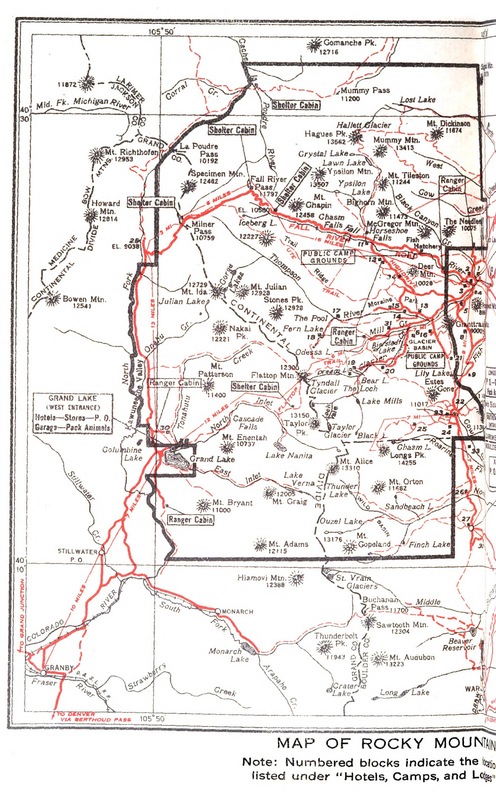
Big Owl is marked by #33, on the far right edge just outside the park boundaries. Source:
https://babel.hathitrust.org/cgi/pt?id=mdp.39015027926602&view=1up&seq=88&size=125&q1=big%20owlhttps://babel.hathitrust.org/cgi/pt?id=mdp.39015027926602&view=1up&seq=88&size=125&q1=big%20owl
Midsummer 1914, Katherine Garetson stood on the front porch of her sister’s mountain cabin and felt herself “whipped and tossed and spattered by a violent storm of wind, rain, thunder, and lightning.” Instead of hating the experience, she wished that “everyone could put into his life one storm of the high mountains.” Katherine saw homesteading as an opportunity for adventure as well as property ownership.
During that 1914 midsummer storm, Katherine offered shelter to a man who had recently established his own homestead in the area, and he related its virtues to her. Katherine wrote that “every American with a spark of romance in his make-up has at some time of his life cherished this idea of taking up a claim.” Her visitor’s words, however, “fell on particularly fertile ground because [she] was seeking escape from the return to St. Louis.” So, in 1914, Katherine Garetson, a single woman in her late thirties from St. Louis, Missouri, filed for a 160-acre claim in Tahosa Valley, Colorado just south of Rocky Mountain National Park.
Katherine called filing a three-year residence claim “the most serious thing you can do, aside from marrying.” As she considered the possibility, she said “The more I thought, the more I feared. At last I deliberately took the leap as one who shuts his eyes and jumps.”
Katherine’s cabin on the property was completed just before winter set in. It was given the name Big Owl, a tribute to the great horned owl living nearby. She moved in with two companions, Annie Adele (A.A.) Shreve and Gypsy, a Great Dane. Even with their company, she often felt “desolately lonely and homesick.” With so much to learn and do, Katherine, overwhelmed, “now and then… nearly lost [her] nerve.” Looking back, Katherine commented, “It seems to me that I had an unbearable amount of ignorance to fight against that first year.”
Fortunately, there were friends who offered kindness and support. With the first big snow, Alfred Oberg “rushed down in the morning… fearing that [they] would not know how to prepare for the storm.” He taught the women tricks to prepare for and survive the long, cold winters. The excitement of Saturday mail was a boost, but also “interfered with a settled content,” reawakening interest in a life from which they “were hopelessly cut off.”
Katherine endured incredible hardship, poverty, and loneliness, especially after A.A. took a teaching position in Wyoming and Gypsy, who she struggled to feed, had to be given away. The tearoom Katherine operated was only marginally successful. The first summer ended with bills pouring in and Katherine uncertain how she could survive the coming winter. A brief visit with family revitalized her determination and provided her with a wealthy benefactor willing to “take a long chance on a good land proposition.” He gave her a thousand dollars to pay her debts and get restarted.
Katherine continued her improvements and endured another winter before reporting to the land office in Denver in December 1917 to “prove up” her claim (colloquial phrase for the legal process of securing title to homestead lands after meeting certain government requirements). “Free of all obligations to the government,” she boarded a train for St. Louis. In March, a large envelope arrived from the land office. Instead of containing her patent, it informed her that the Forest Service contested her fulfillment of cultivation requirements. Disregarding the advice of friends and family, she returned, with A.A. to the claim and planted another crop. The next envelope was good news, delivering her patent, the reward of all her labors.
While Katherine had originally hoped her land “would become valuable as summer cottage sites,” by the end of her proving time, she “was in no hurry to go someplace else to live.” She loved her home, her land, and “the whole mountain world.” She stayed as long as possible, but World War I and the influenza epidemic forced her, financially, to move out to Denver. There, she relied on her stenography and typewriting skills to work for a state senator and later the Secretary of State. She vacationed at Big Owl, “the best loved spot on earth” for years to come, but never lived there again.
Images

Big Owl is marked by #33, on the far right edge just outside the park boundaries. Source:
https://babel.hathitrust.org/cgi/pt?id=mdp.39015027926602&view=1up&seq=88&size=125&q1=big%20owlhttps://babel.hathitrust.org/cgi/pt?id=mdp.39015027926602&view=1up&seq=88&size=125&q1=big%20owl
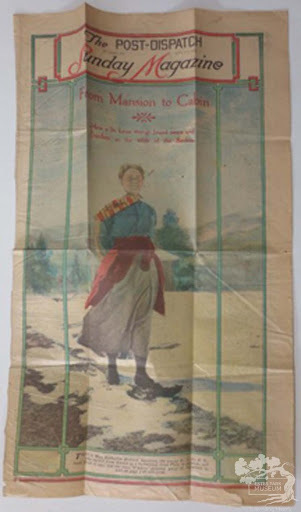
Garetson was featured in the Post-Dispatch Sunday Magazine. The cover highlights her move from a St. Louis mansion to a cabin in Estes Park. Source: Courtesy of Estes Park Museum, Wm_1981.082.016.
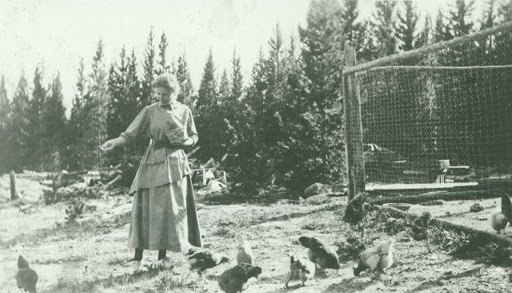
Katherine Garetson attends to chores, specifically feeding her chickens, on her homestead property. Source: Courtesy of Estes Park Museum, Wm_1981.094.005.
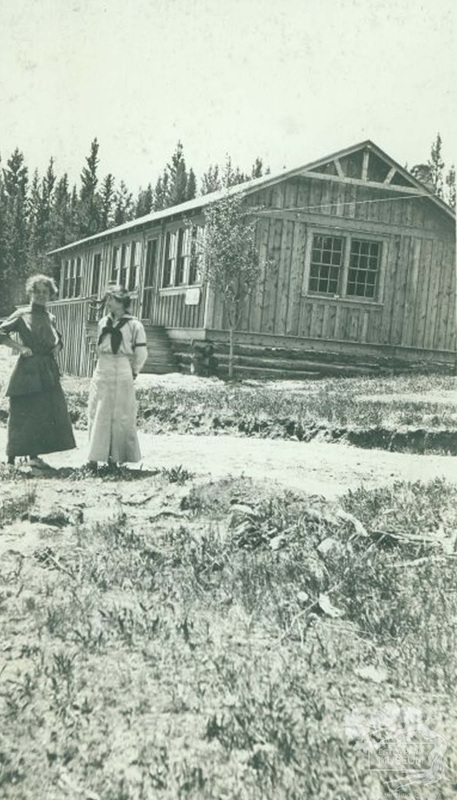
Katherine Garetson (left) and Annie Adele Shreve (right) stand in front of Big Owl Tea Place. Source: Courtesy of Estes Park Museum, Wm_1981.094.004.

Katherine Garetson’s Big Owl Tea Place during winter. She welcomed most of her guests during the summer months when tourists visited. Source: Courtesy of Estes Park Museum, Wm_1981.082.007.
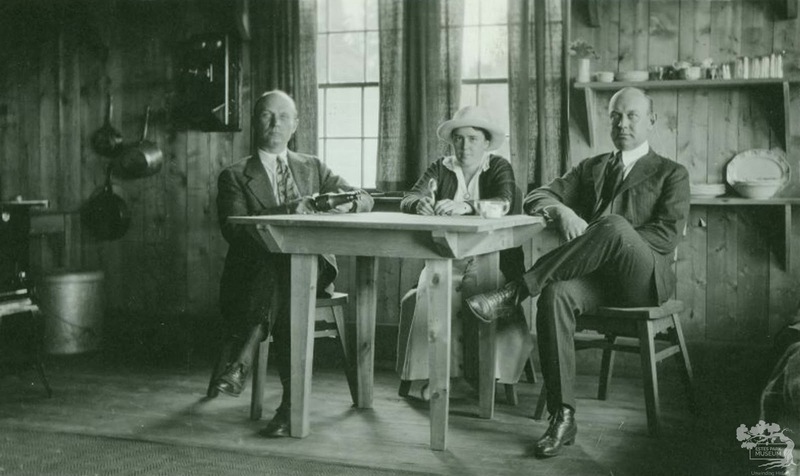
Guests dine in the interior of Garetson’s tea room in about 1917. Tourists visiting the park during the summer were her most frequent guests. The photo shows open shelving displaying dishes, pans, and other goods. A telephone is on the left wall and the corner of the wood stove is visible. Garetson spent winter months creating souvenirs that she sold in the tearoom as well. The chairs in use were specially made in St. Louis. Source: Courtesy of Estes Park Museum, Wm_1981.082.020.
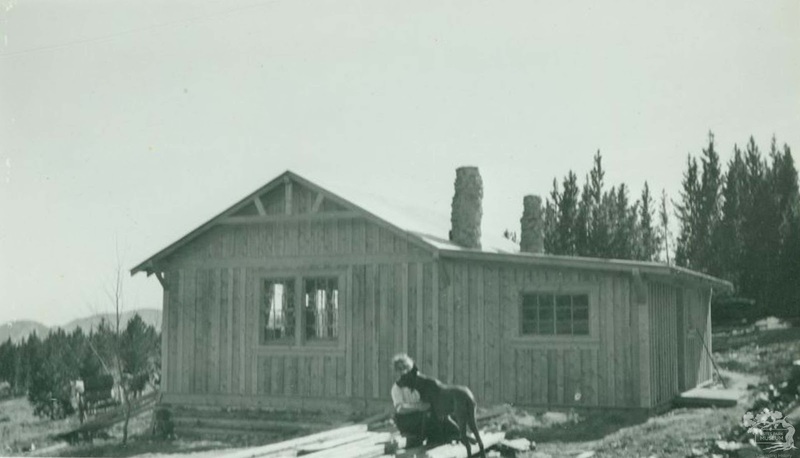
Katherine Garetson and her Great Dane, Gypsie, in front of Big Owl Tea Place. Source: Courtesy of Estes Park Museum, Wm_1981.082.003.
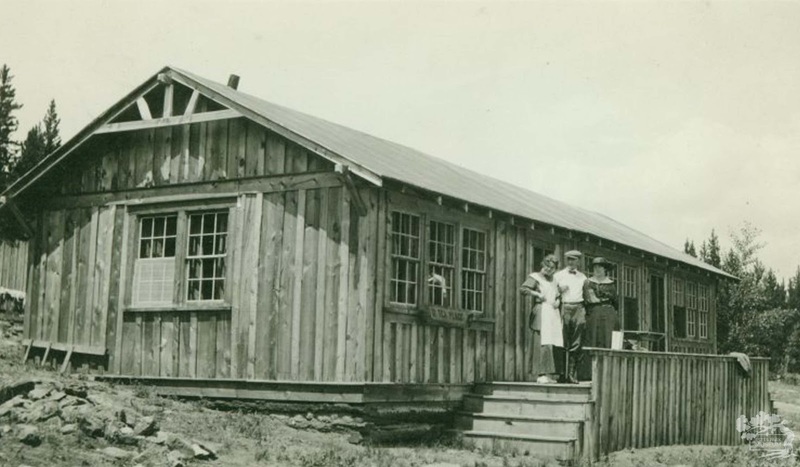
Katherine Garetson (left) stands with two unidentified guests on the porch of Big Owl Tea Place. Source: Courtesy of Estes Park Museum, Wm_1981.082.004.